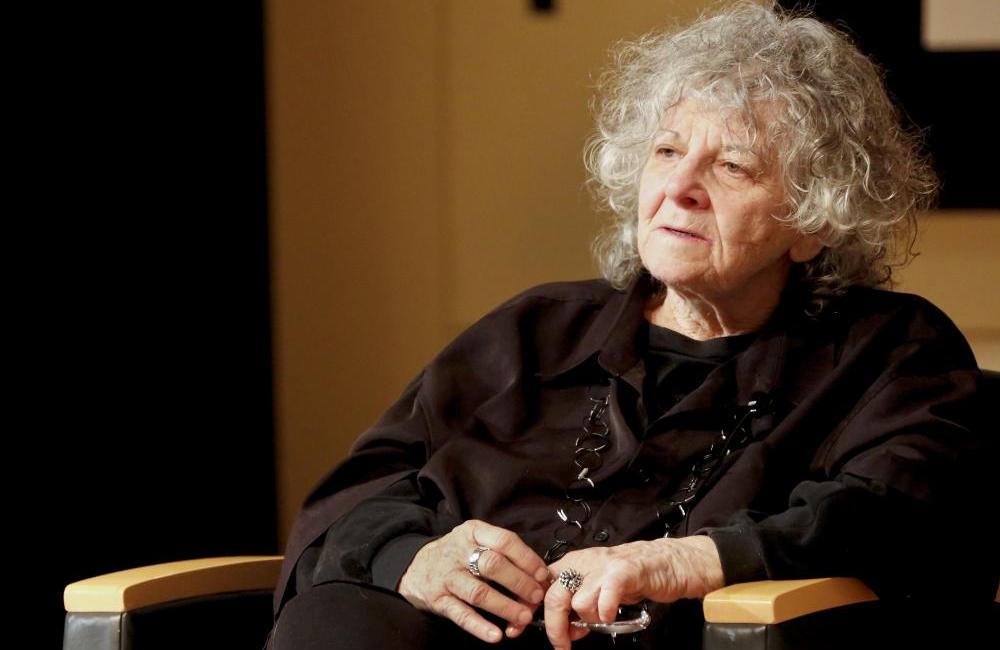Ada Yonath serves as director of the Helen and Milton A. Kimmelman Center in Rehovot, Israel. In 2009 she received the Nobel Prize in Chemistry for her pioneering work in the structure and function of the ribosome.
Yonath delivered the Jan. 15 Eugene P. Wigner Distinguished Lecture on the topic “Combating species-specific antibiotics resistance and thoughts about origin of life.” We asked about her research and the environment for women in science.
1. Why do diseases become resistant to antibiotics?
We are talking only about bacterial diseases, infectious diseases. They’re made by bacteria, and bacteria want to live. If we take antibiotics, bacteria die, and they don’t want to. They are cleverer than us, they have been on Earth before us, and they are with us. There were mammoths and dinosaurs, but they’re all gone. Bacteria are still here. They are with us, and the pessimists say they will be here after us. But so far, what they’re doing, the way they behave, they want to live. So they become resistant. It’s not that the diseases are resistant; it’s the bacteria.
2. You say the world seems to be headed for a “post-antibiotic era.” What would such an era look like?
Like before antibiotics. This is before the middle of the last century. Antibiotics have been used only from the middle of the last century. Before that, people died from infectious diseases that don’t count today. They died at 35 or 40, before antibiotics. Look at Mozart, Schubert—they died when they were not even 40 years old from infectious diseases. Maybe we all want to be Mozart, but that’s not the only way.
3. What can we do about it?
Try to make better antibiotics. I’m not sure we can cure everything, that we can win the game against bacteria, but we can try to control it, to make the appearance of resistance more controllable. We can look for new antibiotics, not overuse antibiotics, not use antibiotics where they are not needed. If possible, if somebody has an idea for something completely new, I would love that.
4. You are only the fourth woman to win the Nobel Prize in Chemistry and the first from the Middle East to win a Nobel Prize in the sciences. How do you see the climate for women in the sciences?
First of all, sciences are also physiology, medicine, and there are more women
there. Second, I don’t think that the committee in Stockholm is against women.
I don’t think they had 46 years until they found a woman. I just think that there
are less women in science—surely less in chemistry. The society is still not encouraging women to go into science. Until now nobody said it clearly; they said it indirectly. They penetrate into the heads of young girls that it’s no good to be a scientist, no good to be a scientist and a mother. They just implant it into the girls. So this has to be changed. I don’t think that in science there is something against women. Many women say that it’s a society made up of men and they’re against women; I didn’t feel it. I went in from a poor family, and I was in, and I never felt that being a woman made a difference. There is a difference, but it’s in the number of females that go in and the number of females that stay. They study but go on to do other things, things that are related to science, but not always in science. So I think that this is the main problem, that there are not enough girls, not enough young girls or young scientists. I think that once they are in, they have the same chance. It’s difficult to be a scientist, but not only for women, also for men. If you look at the proportion of how many men are there and how many female, I think the females are not doing so badly. Maybe not as good, but not so badly. More women, more prizes.
5. Why was it important to visit ORNL, meet with researchers here, and participate in the Wigner Lecture Series?
First of all, I’m trying to visit every university or research center that I think has a meaning, that has the quality and contributes. I’ve
never been here, but I heard about it. I know there are three new beam lines here now, and I just wanted to see what’s going on.


